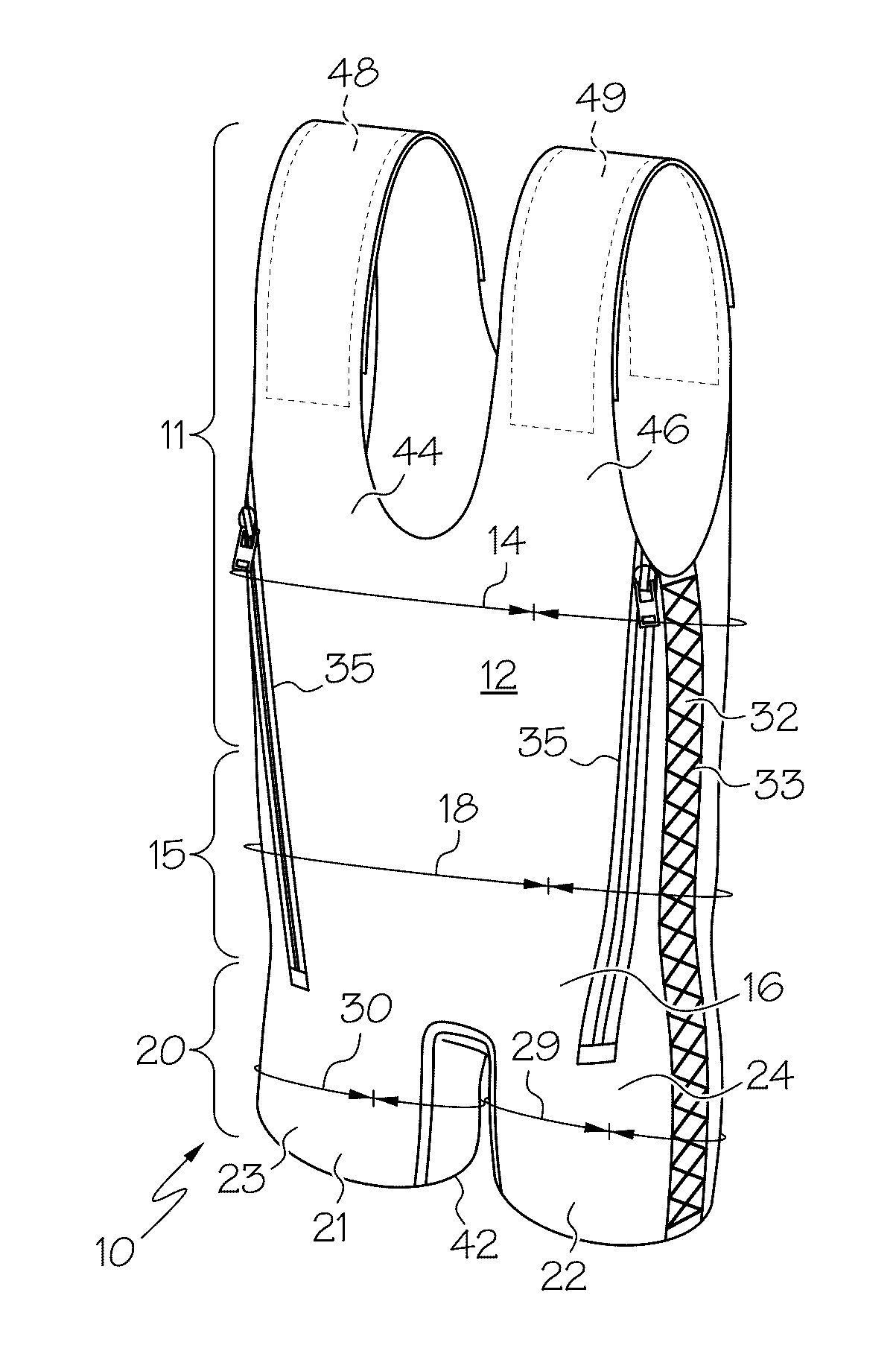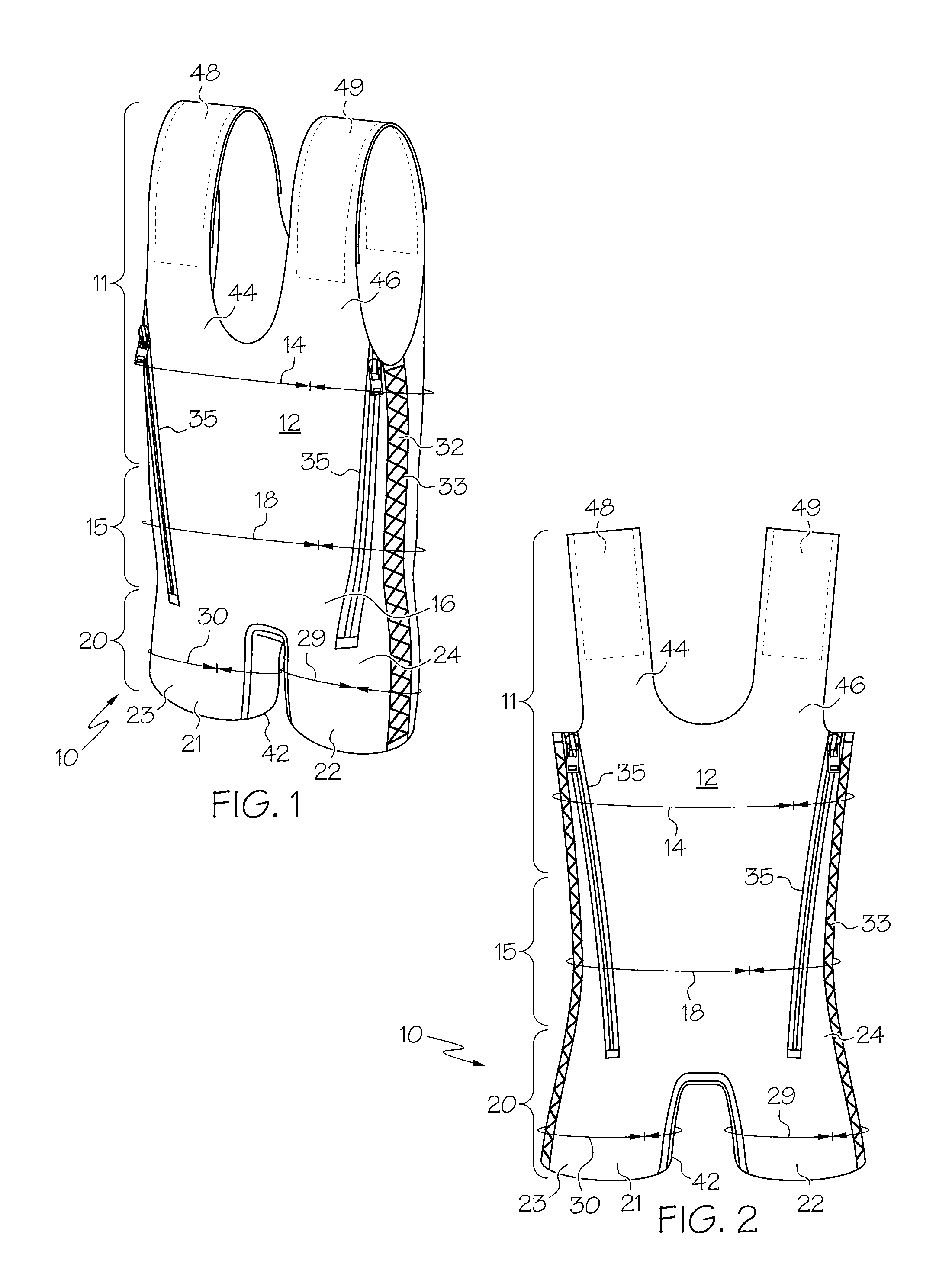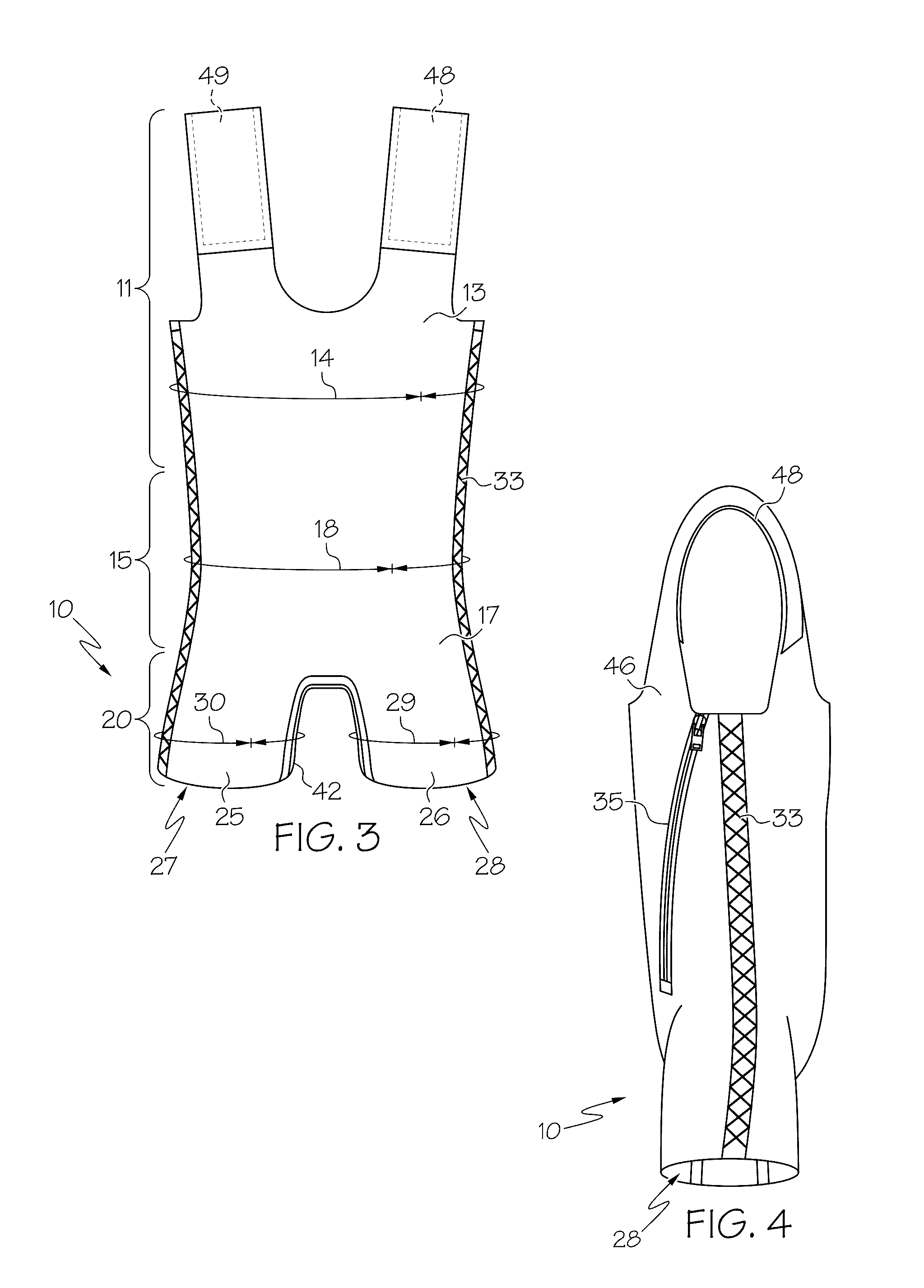Adjustable suit
a suit and adjustment technology, applied in the field of adjustable suits, can solve the problems of requiring a great deal of effort to wriggle, tug, pinch, push into the suit, and conventional suits lack the ability to adjust the tightness or looseness of the suit, so as to reduce the time and effor
- Summary
- Abstract
- Description
- Claims
- Application Information
AI Technical Summary
Benefits of technology
Problems solved by technology
Method used
Image
Examples
Embodiment Construction
[0052]Referring initially to a first embodiment illustrated in FIGS. 1-8, an adjustable suit 10 is shown which includes a torso section generally indicated at 11, a waist section generally indicated at 15, and a leg section generally indicated at 20. Torso section 11 is optional, and the suit may include just the waist and leg sections. The suit 10 is preferably made from a high tensile strength (e.g., 90 psi or greater), relatively inelastic material such as single or multi-ply polymeric fabric including polyester or nylon, and natural fibers including cotton (such as, for example, canvas or denim). By “relatively inelastic” it is meant that the fabric does not noticeably stretch when subjected to the stresses and strains associated with its use in a variety of lifting activities. The material forming suit 10 may comprise a solid sheet of material, or may be of woven fabric.
[0053]Torso section 11 includes a front portion 12 and a back portion 13. The suit provides a torso circumfer...
PUM
 Login to View More
Login to View More Abstract
Description
Claims
Application Information
 Login to View More
Login to View More - R&D
- Intellectual Property
- Life Sciences
- Materials
- Tech Scout
- Unparalleled Data Quality
- Higher Quality Content
- 60% Fewer Hallucinations
Browse by: Latest US Patents, China's latest patents, Technical Efficacy Thesaurus, Application Domain, Technology Topic, Popular Technical Reports.
© 2025 PatSnap. All rights reserved.Legal|Privacy policy|Modern Slavery Act Transparency Statement|Sitemap|About US| Contact US: help@patsnap.com



